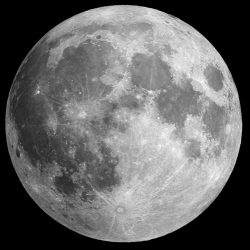
A supernova 2 million years ago sprayed the solar system with stellar material, a barrage of newly minted molecules, elements forged by the explosion. Among those elements was a special kind of iron, a radioactive 60Fe isotope. Scientists have previously found traces of 60Fe in crust and sediment samples collected from the floor of the Pacific Ocean.
Now, researchers in Germany say they’ve detected higher concentrations of 60Fe in lunar samples. Scientists believe the iron isotopes found on Earth and the moon were both born of and deposited by the same supernova explosion.
Researchers say it’s possible some of the unique iron isotope could have been created by the constant collisions between cosmic particles and the lunar surface.
"But this can only account for a very small portion of the 60Fe found," Gunther Korschinek, a physicist at the Technical University of Munich, said in a news release.
"The measured 60Fe-flow corresponds to a supernova at a distance of about 300 light-years," Korschinek explained. "This value is in good agreement with a recently theoretical estimation published in [the journal] Nature."
The new research was conducted using lunar samples collected during Apollo missions 12, 15 and 16, between 1969 and 1972. The chemical composition of each sample was analyzed using the accelerator mass spectrometer at the Maier-Leibnitz Laboratory.
